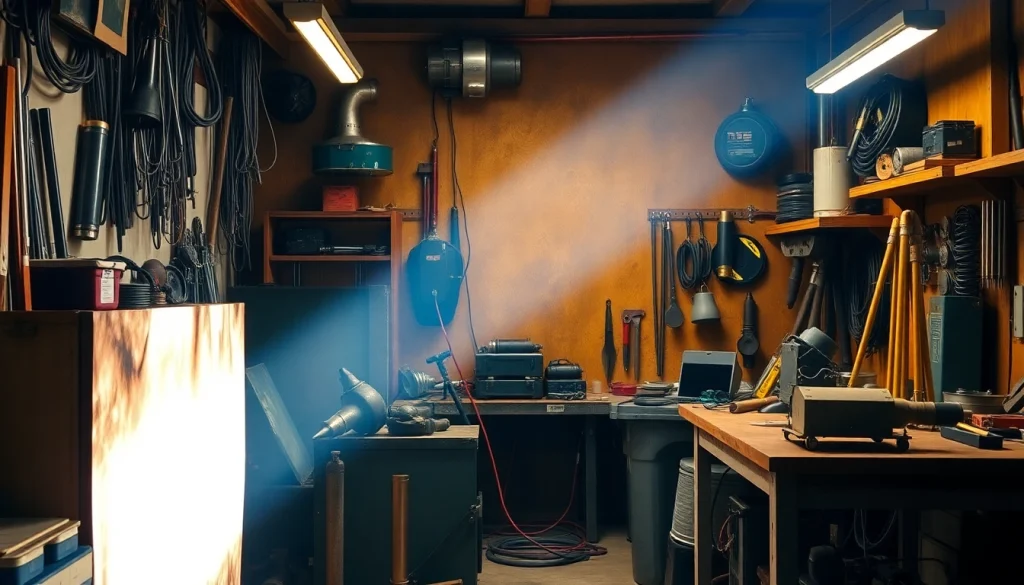Introduction to Welding Supplies
Welding is an essential skill in various industries, from construction to manufacturing, and even in artistic metalwork. As such, welding supplies play a vital role in ensuring both the quality of the work and the safety of the welder. This article explores what welding supplies are, the different types available, and why selecting high-quality equipment is crucial for success in any welding project.
Understanding Welding Basics
Welding is the process of joining materials, typically metals or thermoplastics, through coalescence. This is done by melting the workpieces and allowing them to fuse together. Various welding techniques such as MIG (Metal Inert Gas), TIG (Tungsten Inert Gas), and Stick welding are employed based on the materials involved and the desired outcome. Understanding these fundamentals lays the groundwork for selecting appropriate welding supplies.
Types of Welding Supplies Available
The broad spectrum of welding supplies can be categorized into machines, accessories, and safety gear. Each type has different subcategories, depending on the technique being used. For instance, if you aim to perform MIG welding, you will need MIG welders, welding wire, and related accessories.
- Welding Machines: These are the heart of the welding operation and include MIG welders, TIG welders, and stick welding machines.
- Consumables: Items such as welding rods, wire, and gas tanks are essential for the welding process.
- Safety Equipment: Proper safety gear including helmets, gloves, and jackets to protect welders from harmful exposure.
Importance of Choosing Quality Equipment
The quality of welding supplies can significantly impact the integrity of the welds and the safety of the operator. High-quality equipment reduces the risk of accidents, ensures consistent results, and can even save cost in the long run by reducing wastage and minimizing error rates.
Essential Welding Tools for Beginners
Must-Have Welding Supplies and Accessories
For beginners, entering the world of welding can be daunting. However, having a solid set of essential tools simplifies this transition. Key supplies include:
- Welding Helmet: Essential for protecting the eyes and face from sparks and UV radiation.
- Welding Gloves: A good pair of gloves protects hands from heat and physical injuries.
- Chipping Hammer: Used to remove slag from welds for a cleaner finish.
- Wire Brush: Important for cleaning and preparing metal surfaces prior to welding.
- Welding Jacket: This protects the welder’s upper body from sparks and heat.
Choosing the Right Welder
The choice of welder can be determined by factors such as the type of project, skill level, and the specific materials involved. Beginners may start with a MIG welder for its ease of use, while professionals might opt for TIG welders for higher precision work. Understanding the specifications and functionalities of different welding machines is essential to make an informed decision.
Safety Gear You Can’t Afford to Skip
Welding poses inherent risks, which makes safety gear non-negotiable. A comprehensive safety checklist for beginners includes:
- Protective Eyewear: Safety glasses with appropriate filter shades.
- Heavy-Duty Footwear: Steel-toe boots are recommended to protect feet from heavy equipment.
- Respiratory Protection: Depending on the environment, mask utilization may be necessary to avoid inhalation of fumes.
- Hearing Protection: Noise levels during welding can be significant, making earplugs or earmuffs advisable.
Advanced Welding Supplies for Professionals
High-Tech Welding Equipment
For seasoned welders, investing in advanced equipment can greatly enhance work quality and efficiency. High-tech options include:
- Multi-Process Welders: These versatile machines can be used for MIG, TIG, and stick welding, offering unparalleled flexibility.
- Plasma Cutters: Ideal for cutting metals quickly and efficiently.
- Fume Extractors: Essential for maintaining a safe working environment by removing harmful smoke and fumes.
Top Brands in the Welding Industry
Different brands stand out in the welding industry due to their innovation, reliability, and broad range of products. Leading names include:
- Miller Electric: Known for high-performance welders and reliable support.
- Lincoln Electric: A commitment to quality and a lifetime warranty on many products makes them a favorite.
- ESAB: Innovator in welding equipment recognized for its efficiency and user-friendly operation.
Specialized Welding Supplies and Their Uses
Advanced welding projects often require specialized tools. Examples include:
- Welding Positioners: These tools provide mechanical support to position workpieces.
- Welding Robots: For automation in production settings, these machines provide precision and remove human error.
- Heat Treating Equipment: Necessary for processes that involve altering the properties of metals post-welding.
Where to Buy Welding Supplies
Evaluating Online vs. Physical Stores
Purchasing welding supplies can be done through both online retailers and physical stores. Each has its benefits. Online stores often offer wider selections and convenience, while physical stores provide the tactile experience of inspecting equipment in person. Evaluating the pros and cons is essential to determine what suits your needs better.
How to Find Local Welding Supply Stores
Finding local stores can be done through search engines, local business directories, or welding associations. Visiting local welding supply stores allows you to speak with knowledgeable staff, who can provide recommendations based on your specific needs.
Benefits of Bulk Buying Welding Supplies
For workshops or individuals who frequently engage in welding, bulk buying supplies can lead to significant savings. Benefits include:
- Cost Savings: Purchasing in bulk often results in lower prices per unit.
- Convenience: Having a surplus of supplies reduces the frequency of trips to stores.
- Consistency: Ensures that you have matching supplies for all projects, enhancing work quality.
Maintaining Your Welding Equipment
Best Practices for Equipment Care
Proper maintenance extends the life of welding equipment and ensures optimal performance. Best practices include:
- Regular Cleaning: Keeping machines free of dust and contaminants.
- Lubrication: Moving parts should be periodically lubricated to avoid wear and tear.
- Check Cables: Inspect electrical cables for fraying or damage to prevent hazards.
Identifying When to Replace Tools
Knowing when to replace welding tools is critical for safety and effectiveness. Signs that tools may need replacement include:
- Inconsistent Performance: A noticeable drop in quality or consistency indicates a problem.
- Visible Damage: Signs of wear, such as cracks or serious repairs on machines.
- Frequent Breakdowns: Constantly needing repairs often means it’s more economical to replace the tool.
Understanding Warranties and Returns
Every welding tool comes with its warranty and return policy, which should be understood before purchase. Familiarity with these policies protects investments, as you’ll know which repairs are covered and the process for returns if needed. Always retain original receipts and documentation as proof of purchase.



